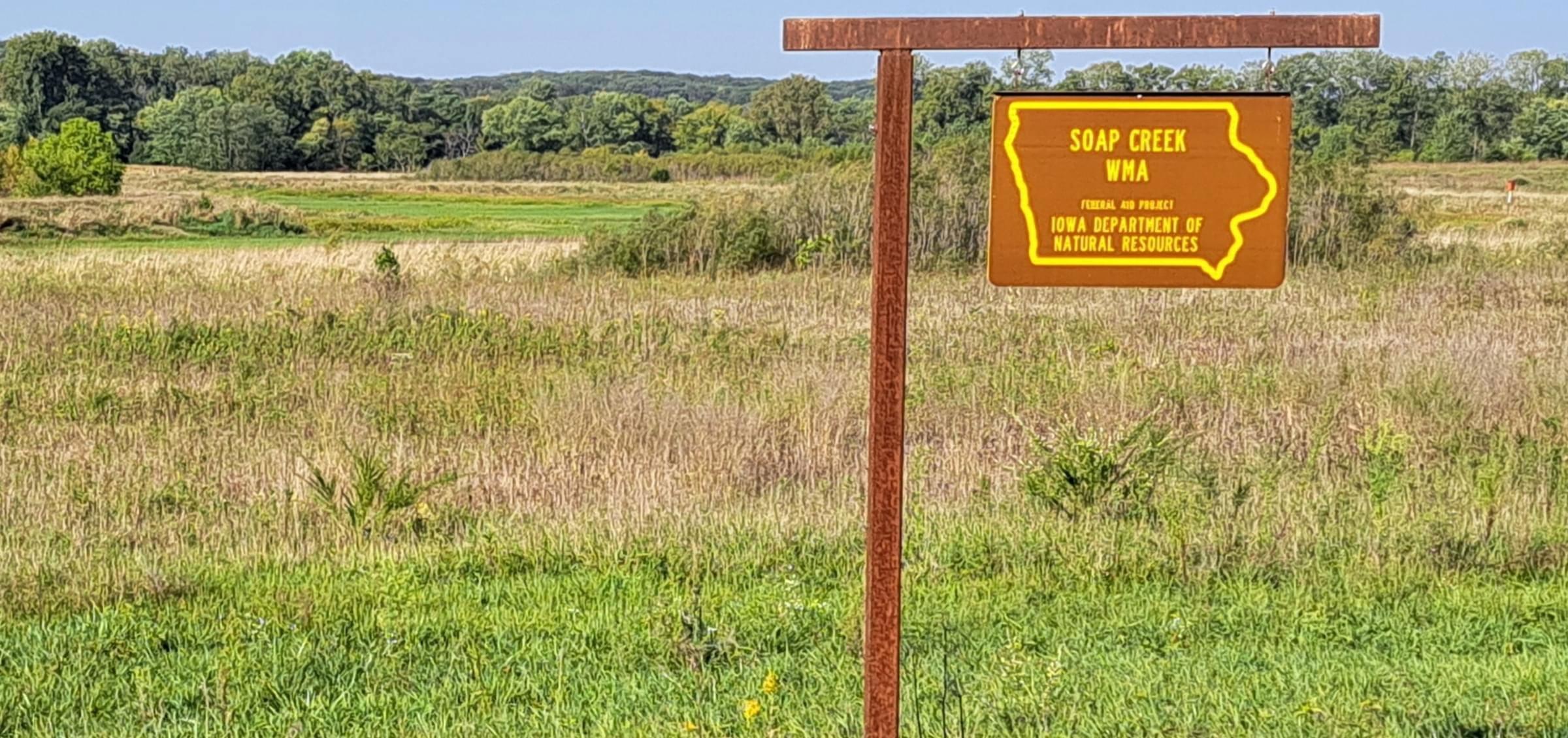Soap Creek WMA

About this location
About Soap Creek - Stephens Forest Bird Conservation Area
See all hotspots at Soap Creek - Stephens Forest Bird Conservation Area
Dedicated in 2018, the Soap Creek-Stephens Forest Bird Conservation Area (BCA) occupies a total of 145,886 acres in portions of Wapello, Davis, Appanoose, and Monroe counties. This unique landscape is comprised of 35% grassland, 45% woodland, and 3% aquatic habitat, which supports at least 116 species of nesting birds and a spectacular amount of wildlife diversity. Out of the 256 bird species documented, 88 are Species of Greatest Conservation Need (SGCN), including four state-endangered and two state-threatened species. The grasslands in this BCA support declining nesting species such as Eastern Meadowlark, Bobolink, Henslow’s Sparrow (threatened), Field Sparrow, and Upland Sandpiper. Wooded areas provide key nesting habitat for the Red-shouldered Hawk (endangered), Wood Thrush, Acadian Flycatcher, and Worm -eating Warbler. Savanna habitat supports the Redheaded Woodpecker and Barn Owl (endangered), Northern Mockingbird, and Eastern Bluebird. Species like the Bell’s Vireo, Yellow and Black-billed Cuckoos, Yellow-breasted Chat , and Loggerhead Shrike prefer shrub habitats, which are also well represented within this BCA. In addition, the diverse habitat in this area provides important stopover locations for migrating woodland species including the Golden–winged, Canada and Bay-breasted warblers, and for wetland birds like Blue-winged Teal, American Woodcock, American Golden Plover, and Lesser Yellowlegs. This area is an important part of Iowa’s history; it is in the part of the state that was settled earliest by Euro-Americans, who closely interacted with American Indians, inhabitants of this state for thousands of years prior to settlers arriving.
Last updated October 5, 2023